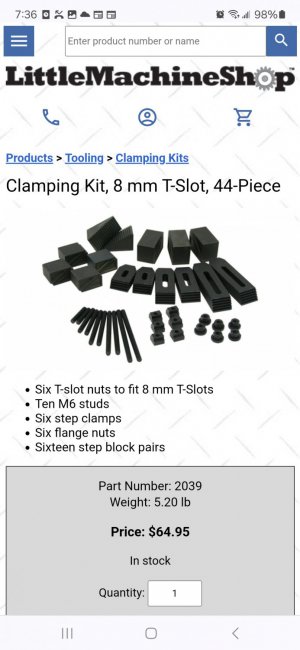I suggest look at the sizes of the parts that you will be holding: if most of them are going to be small, then 10-32 clamps are going to work better; but if the parts are going to be larger or require heavier cuts, the 1/4-20 would be best.
My LMS 3990 is basically the same size as your X2D, with a larger motor, belt drive and some other bells & whistles. I have a number of fixture plates:

The three at the top were cut from a 7" x 13" x 3/4" 6061 Sherline #3562 "Mill Tooling Plate" and have 10-32 holes and "Sherline" T-Slots that take 10-32 square nuts. The four on the lower right were cut from a 4" x 16" x 1/2" 6061 plate and have 1/4-20 holes. The one on the lower left is 6" x 8" x 1"
Alca 5 (precision cast plate designed for fixture/tooling plates) and also has 1/4-20 holes. As I noted, I like the 10-32 hole plates for holding smaller parts since the clamps are also smaller. The 1/4-20 hole plates are more flexible since they have more holes and 1/4" clamps are available in a range of sizes.
I also have an SMW
6" x 14" x 0.60" 6061 plate that has 1/4-20 holes, and a
Hobby Mod Vise to hold larger parts on the table:

The 1/4-20 holes in the SMW plate are countersunk for use with their
Fixturing Pins for alignment (two of these pins are at the bottom of the photo above), which I think are what
@GeneT45 was referring to.
I also have a number of Sherline angle plates that are 10-32 (and some with T-Slots) and other miscellaneous tooling plates that I have collected over the years.
Here is an example of using the Alca 5 plate, which is clamped using the outer jaws of my 3" milling vise:

The hand wheel is supported on the hub and the low point of the rim (on parallels); 1/4" toe clamps on the spokes & rim held the hand wheel in place for a light facing cut and drilling & tapping three mounting holes.





